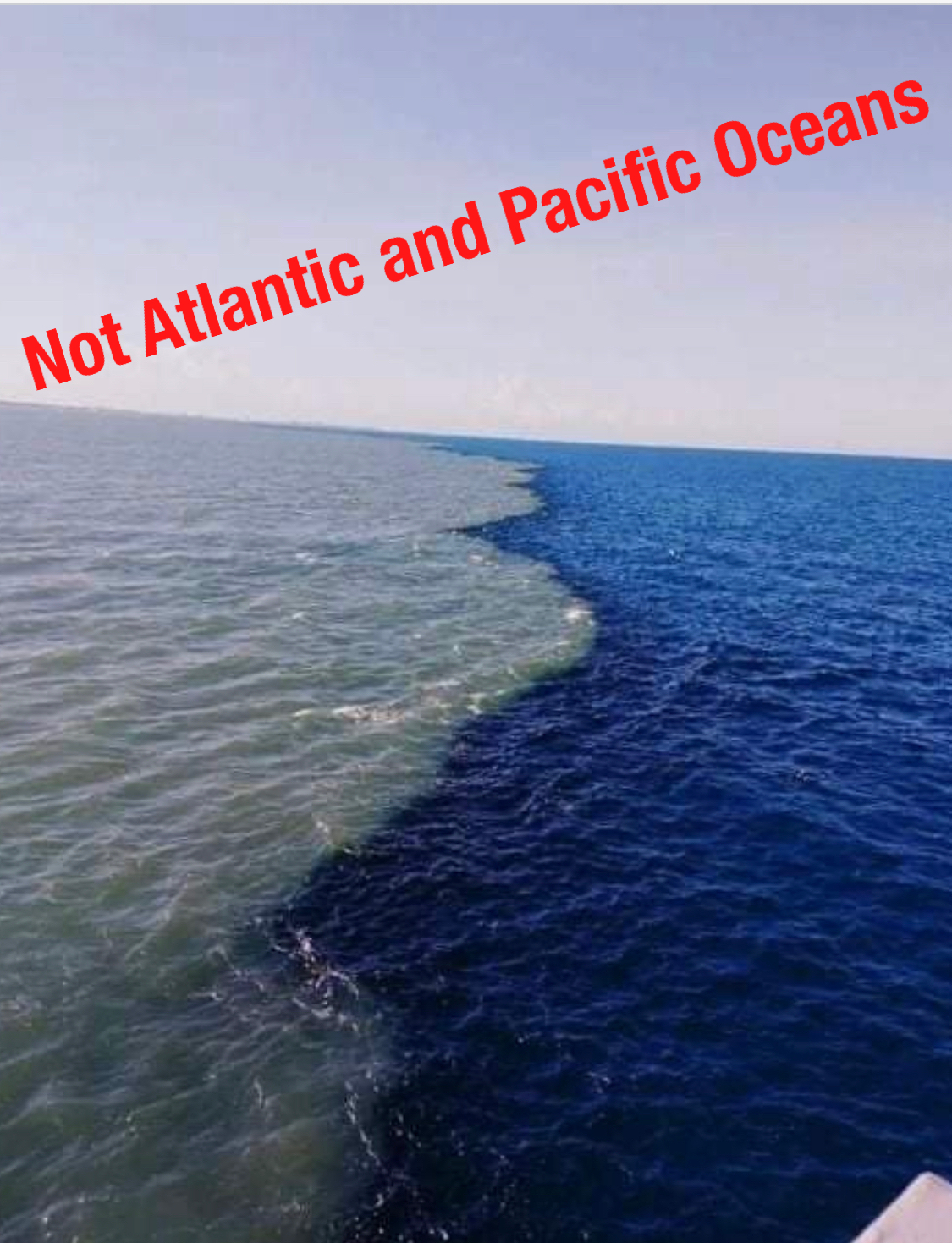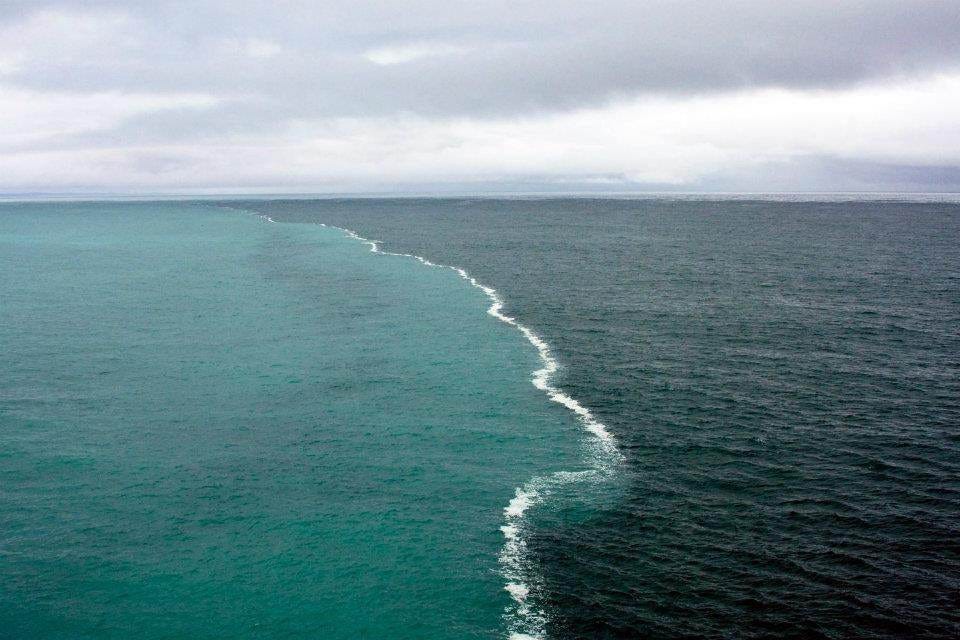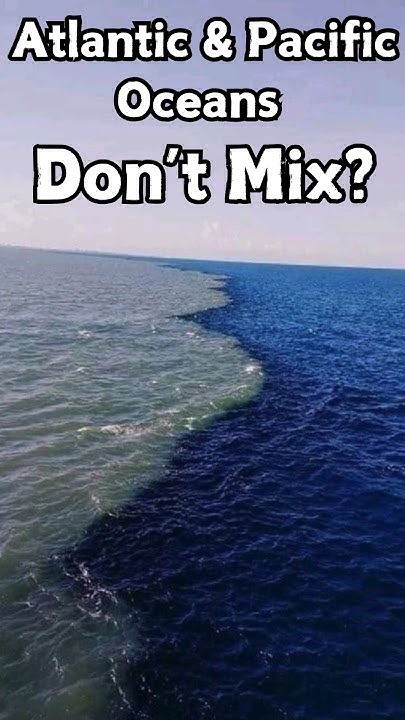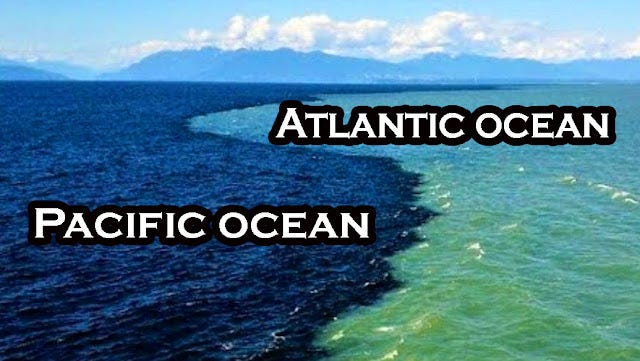Why Does Atlantic Ocean And Pacific Ocean Not Mix

Ever seen those videos? The ones showing two oceans meeting, but not mixing? It's pretty wild, right?
The Atlantic and Pacific Oceans come face-to-face. But they remain distinctly separate. It’s like a watery standoff! What's the deal?
The Great Ocean Standoff!
Okay, so they *do* mix eventually. But there's a visible line where they meet. It's not a solid wall, more of a hazy division.
This isn’t some magical force field at work. It's all about good ol' science! But the visual effect is still super cool. It is like a natural art.
Density Differences: The Key Player
Think about it like oil and water. They just don't like each other much! That's because of something called density. Density refers to how much "stuff" is packed into a certain space.
The Atlantic and Pacific have different salinity levels. Salinity means how much salt is dissolved in the water.
The Atlantic tends to be saltier and cooler. This makes it denser than the Pacific. Denser water sinks, less dense water floats. It is simple physics!
Temperature Adds to the Mix
Temperature also plays a role. Cold water is denser than warm water. It's like when you put ice in your drink. The ice sinks!
The Atlantic generally has cooler temperatures. So, this difference in temperature enhances density differences. So it helps to keep the waters separate.
Surface Tension at Work
There’s also surface tension to consider. This is like a skin on the water's surface.
Different salinity and temperature levels can change the surface tension. This can contribute to the visible line between the oceans.
A Visual Spectacle: Seeing is Believing!
The meeting point is often off the coast of Alaska. This area is known for its dramatic landscapes and marine life. Now you can add ocean collisions!
Witnessing this phenomenon in person is incredible. Imagine seeing that clear line dividing the two massive bodies of water. It really gives you perspective!
Why It's So Entertaining
It defies our expectations. We assume that water just mixes with water. Right? Wrong! This visual separation makes it super interesting.
It makes you think about the scale of our planet. These are not just puddles! These are vast, complex systems interacting. The oceans are powerful!
Plus, the photos and videos are simply stunning. The contrast in color and texture is mesmerizing. You can just keep watching it.
More Than Just a Pretty Picture
It's a reminder that our planet is dynamic. It is constantly changing. There is so much going on beneath the surface.
It sparks curiosity about oceanography and climate science. What are these currents doing? How does it affects weather patterns?
It may even inspire you to learn more about our oceans. They are so important to the health of our planet. And you can also plan your next trip to Alaska!
Go See It (Maybe!)
While seeing the *exact* dividing line isn't guaranteed, you can plan a trip.
Even if you don't see the distinct line, you'll experience incredible scenery. From glaciers to whales, Alaska has it all!
So, next time you see a video of the Atlantic and Pacific meeting, remember why it's so captivating. It’s science, spectacle, and a bit of oceanic magic all rolled into one!


















